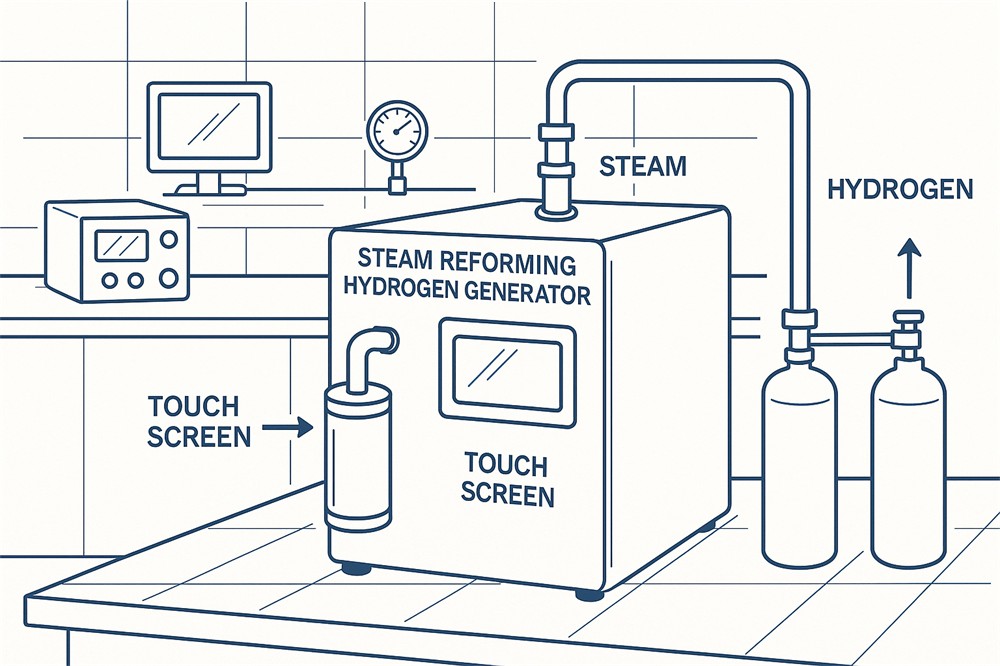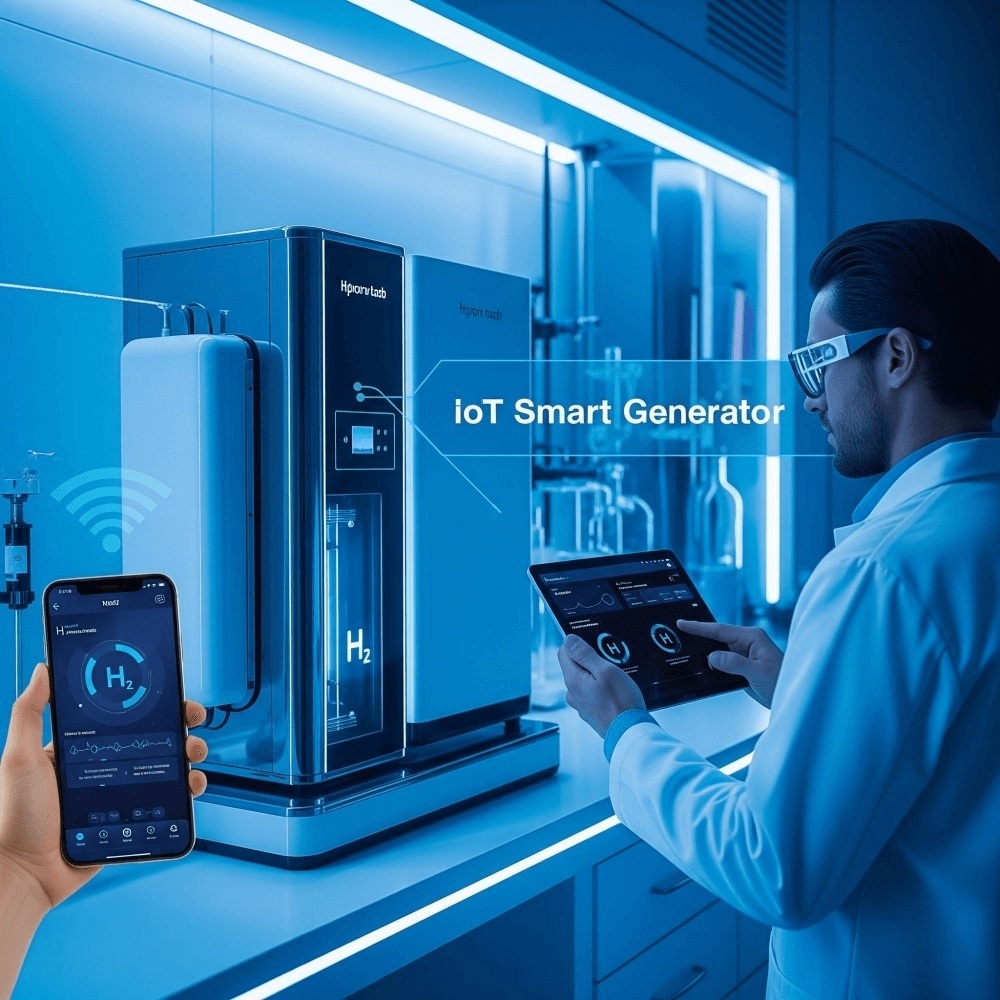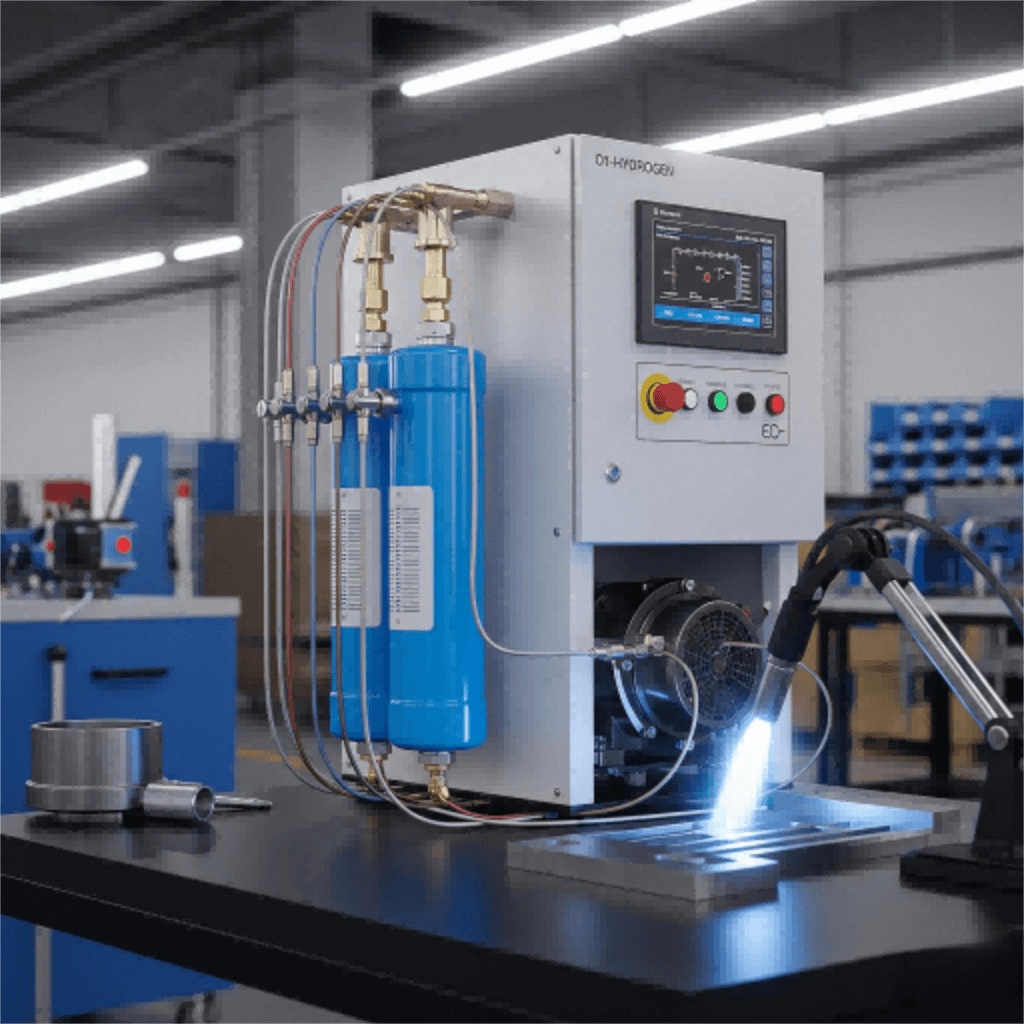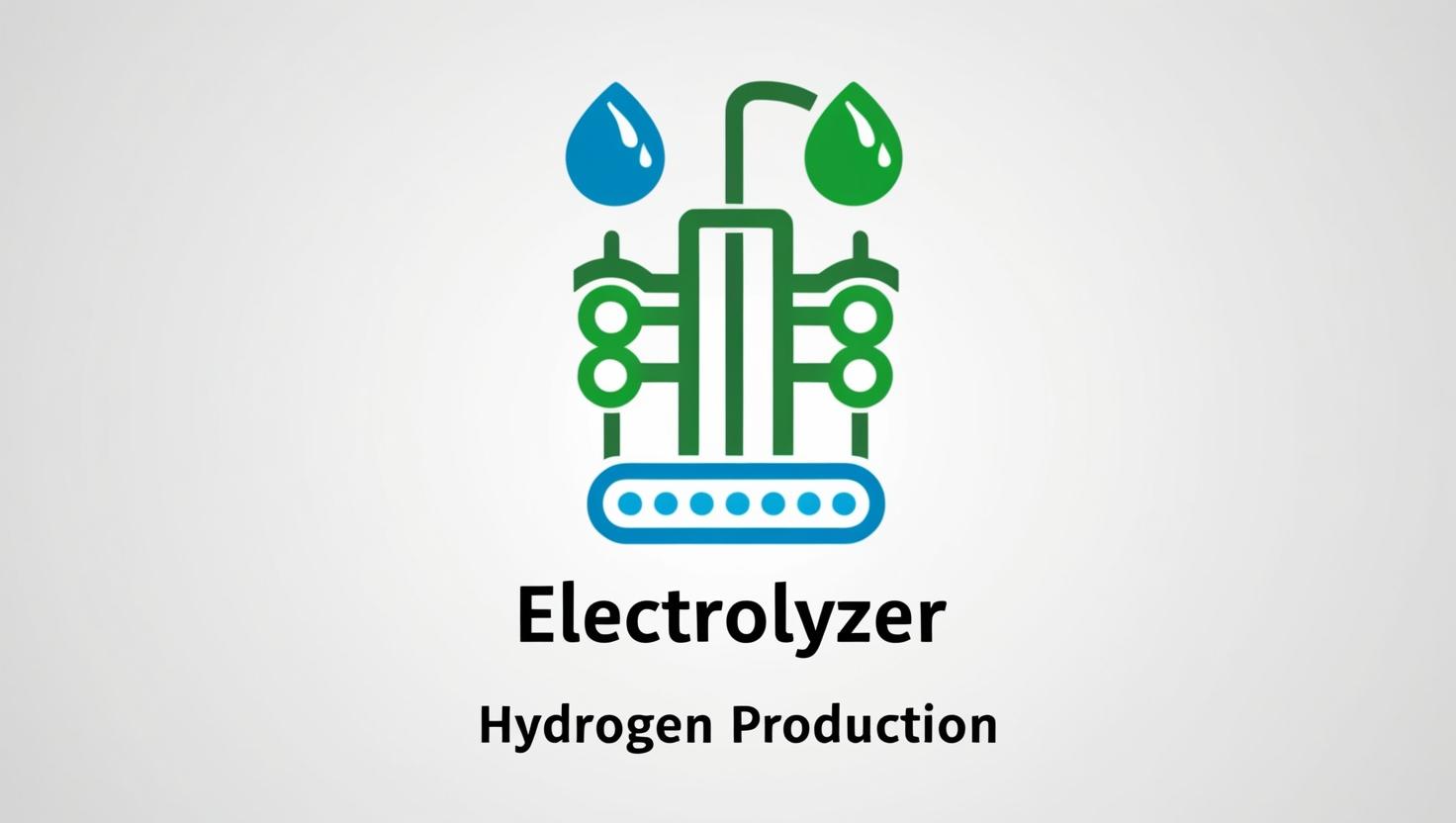I. Introduction: The Rise of On-Site Hydrogen Generation
Hydrogen is fast becoming the poster child for the clean energy transition. Known for its zero-emissions potential and versatility, hydrogen is playing a starring role in helping industries reduce their carbon footprint. As global demand for decarbonization intensifies, more industrial sectors—from steel manufacturing to food processing—are turning to on-site hydrogen generation to ensure a stable, scalable, and sustainable energy supply.
One of the smartest strategies gaining traction today is buying hydrogen generators directly from the factory. This factory direct approach provides a host of benefits: significant cost savings, fully tailored system design, high manufacturing quality, and robust technical support. Whether you’re powering a refinery, chemical processing plant, or a high-purity fuel cell application, going direct could be the competitive edge your operation needs.
II. Why Buy Hydrogen Generators Factory Direct? Key Benefits
A. Cost Advantages
Buying hydrogen generators directly from the manufacturer helps businesses eliminate middleman markups, unlocking substantial cost savings. Distributors and resellers often increase the price to cover commissions, inventory costs, and logistics overhead. Factory-direct purchasing means you’re dealing with the source—negotiating pricing on the system itself, optional accessories, and even installation services.
Additionally, modern hydrogen generator technologies like Proton Exchange Membrane (PEM) systems are highly energy-efficient. Over time, the combination of direct pricing and operational savings yields a faster return on investment (ROI), especially for large-scale industrial users.
B. Customization and Specifications
Industrial hydrogen needs vary widely. A food processing plant may require modest purity levels and continuous operation, while a semiconductor plant demands ultra-high-purity gas with precision control. Factory direct sales make it easier to tailor the system to specific operational parameters like:
- Flow rate (e.g., Nm³/h)
- Purity level (up to 99.999%)
- Pressure requirements
- Remote monitoring integration
Working directly with the manufacturer’s engineering team ensures your system is not only fit-for-purpose but also optimized for your production environment.
C. Quality Control and Assurance
Buying direct gives you a front-row seat to the production process itself. That means enhanced transparency on materials used, quality checkpoints followed, and validation testing done. Leading manufacturers often hold certifications like ISO 9001 for quality and ISO 14001 for environmental management, ensuring your hydrogen generator meets global standards.
Furthermore, direct buyers often gain access to component traceability, which is critical in regulated sectors like pharmaceuticals or aerospace.
D. Direct Support and Expertise
When problems arise, middlemen might pass you through multiple service channels. Direct relationships eliminate that delay. Factory engineers can offer specialized support, including:
- Remote diagnostics
- Real-time troubleshooting
- Preventive maintenance training
This level of direct access often translates into faster problem resolution and less downtime—key for high-volume industrial operations.
III. Key Hydrogen Generator Manufacturers: A Direct Sales Perspective
Let’s explore three fictional companies to illustrate how different manufacturers approach hydrogen generation:
A. HydroCore Systems
HydroCore Systems is known for its high-purity PEM hydrogen generators, serving the electronics and pharmaceutical sectors. Their units are modular, enabling easy scaling and containerized deployment. Their direct-to-client sales approach includes custom site planning and post-installation training.
Product Highlight:
- Model: HCS-500
- Flow Rate: 50 Nm³/h
- Purity: 99.999%
- Application: Fuel cells, lab-grade hydrogen, medical gas
B. AlkaGen Industries
AlkaGen specializes in alkaline electrolysis systems built for rugged industrial applications like ammonia production or metal processing. These systems handle larger flow rates at lower capital cost per unit of hydrogen produced. Their factory-direct model includes lifetime remote monitoring access.
Product Highlight:
- Model: AKG-MEGA
- Flow Rate: 300 Nm³/h
- Purity: 99.9%
- Application: Chemical manufacturing, metallurgy
C. EcoH2 Modular Solutions
EcoH2 provides compact, cost-effective hydrogen solutions for small-to-medium operations. Their focus is on modularity—customers can add generator stacks as their needs grow. EcoH2 emphasizes user-friendly interfaces and low maintenance design, appealing to operators with limited engineering staff.
Product Highlight:
- Model: EHM-60
- Flow Rate: 10 Nm³/h
- Purity: 99.5%
- Application: Food processing, heat treatment
D. Comparing Manufacturers: Product Overviews
| Manufacturer | Technology | Flow Rate (Nm³/h) | Purity Level | Ideal Application |
|---|---|---|---|---|
| heletitaniumhydrogen Systems | PEM | 50 | 99.999% | Pharma, Electronics |
| AlkaGen Industries | Alkaline | 300 | 99.9% | Chemical, Steel Plants |
| EcoH2 Modular | Modular Alkaline | 10 | 99.5% | Food, Medium-scale Industry |
IV. Understanding Product Specifications for Industrial Hydrogen Generators
A. Hydrogen Production Capacity (Flow Rate)
Flow rate, measured in Normal cubic meters per hour (Nm³/h), indicates how much hydrogen a generator can produce. When buying direct, ensure the system can meet your peak and average demand. Oversizing ensures future scalability, while undersizing can cause production bottlenecks.
B. Hydrogen Purity
Purity impacts everything from fuel cell performance to product contamination risk. For ultra-pure hydrogen (≥99.999%), PEM systems with integrated purification stacks are ideal. Lower purity may suffice for combustion-based processes.
C. Operating Pressure
Generators typically output hydrogen at 10–30 bar, but compressors may be added for high-pressure storage or injection into pipelines. Discuss pressure specs directly with the factory to ensure compatibility with your downstream systems.
D. Power Consumption and Efficiency
Power usage is measured in kWh per Nm³ of hydrogen. A low ratio indicates high efficiency. PEM systems are generally more efficient but costlier. Alkaline systems trade some efficiency for lower capital expenditure.
E. Safety Features
A high-quality generator includes:
- Hydrogen leak sensors
- Overpressure valves
- Automatic shutdown protocols
- Explosion-proof enclosures
Always ensure the unit complies with safety norms like ATEX, CE, or IECEx depending on your region.
Certainly! Let’s continue the article from where we left off.
V. Navigating Pricing Strategies When Buying Direct
A. Factors Influencing Hydrogen Generator Prices
The cost of a hydrogen generator varies significantly depending on several technical and commercial variables:
- Technology Type: PEM systems, which use platinum catalysts, are more expensive than alkaline systems due to their complexity and high purity outputs.
- Production Capacity: Larger units with higher flow rates naturally cost more.
- Materials Used: The presence of rare or durable materials in membranes and electrodes impacts pricing.
- Customization: Tailored solutions for specific applications often come with engineering and design costs.
- Integration Needs: Costs can increase when integrating the hydrogen generator into existing infrastructure, including compressors, storage tanks, and safety systems.
Understanding these factors can help you develop a realistic budget and evaluate quotes effectively.
B. Requesting a Quote and Negotiating Terms
When reaching out to a manufacturer, provide a detailed technical specification including:
- Daily hydrogen requirement
- Desired purity and pressure
- Energy source (electricity type, renewable integration, etc.)
- Site location and environmental conditions
These details allow the manufacturer to prepare an accurate quote. Once you have the offer in hand, negotiate key terms, such as:
- Warranty coverage and duration
- Training and support packages
- Spare parts availability
- Installation and commissioning fees
Total cost of ownership (TCO) should be your benchmark—not just the purchase price.
C. Financing and Leasing Options
For large projects, capital expenditure can be a hurdle. Fortunately, many manufacturers now offer financing programs or leasing options:
- Leasing allows smaller companies to access premium systems without large upfront investment.
- Installment financing spreads payments across multiple quarters or years.
- Green energy grants or subsidies may be available depending on your country or state.
Factory-direct relationships often make these options more flexible and easier to negotiate.
VI. Quality Assurance and Certifications: What to Look For
A. Industry Standards and Regulations
Hydrogen production equipment must comply with national and international standards to ensure safe and efficient operation. Key standards include:
- ISO 22734 – Safety of hydrogen generators using water electrolysis
- ISO 14687 – Hydrogen fuel quality for PEM fuel cells
- ASME, CE, UL, IEC – Depending on local market regulations
Make sure the manufacturer is well-versed in your local compliance needs.
B. Factory Certifications
A reputable manufacturer should have:
- ISO 9001 – Quality management systems
- ISO 14001 – Environmental management systems
- ISO 45001 – Occupational health and safety
These certifications reflect a commitment to manufacturing excellence and accountability.
C. Testing and Inspection Procedures
Top manufacturers conduct Factory Acceptance Testing (FAT) and performance testing before delivery. Ask if you can:
- Witness the FAT in person or via video.
- Review calibration certificates.
- Request third-party inspection reports.
This ensures that what arrives on your site performs as promised.
D. Warranty and After-Sales Support
Check for:
- Standard warranty duration (typically 1–2 years)
- Extended warranty options
- Local service centers or partner support
- Availability of critical spare parts
Factory-direct buying gives you the advantage of better terms and faster service response compared to reseller arrangements.
VII. Case Studies: Successful Implementations of Factory Direct Hydrogen Generators
A. Case Study: SteelMax Ltd.
Industry: Steel Manufacturing Challenge: SteelMax required a continuous hydrogen supply for annealing furnaces with high flow rate and 99.9% purity. Solution: They opted for a 250 Nm³/h alkaline hydrogen generator purchased directly from AlkaGen Industries. Outcome:
- Reduced hydrogen procurement cost by 35%
- Improved energy efficiency by 15%
- Integrated waste heat recovery boosted plant-wide sustainability
B. Case Study: PureFoods Inc.
Industry: Food Processing Challenge: Required hygienic hydrogen use for oil hydrogenation at small scale. Solution: Installed a 15 Nm³/h PEM hydrogen generator from EcoH2 Modular Solutions. Outcome:
- Tailored skid-mounted unit reduced floor space by 30%
- Lowered dependency on hydrogen cylinder logistics
- Achieved ROI in 18 months
VIII. Frequently Asked Questions (FAQs)
1. What is the lifespan of an industrial hydrogen generator?
Most well-maintained generators last 10 to 15 years, with regular servicing. PEM systems may require membrane replacements every few years.
2. How long does it take to receive a hydrogen generator after ordering?
Lead time varies by customization level. Standard units ship in 8–12 weeks, while custom systems may take up to 20 weeks.
3. Can I use solar or wind energy to power my hydrogen generator?
Yes, most modern systems can integrate with renewable sources, making them ideal for green hydrogen production.
4. Is a factory-direct purchase suitable for small businesses?
Absolutely. Many manufacturers offer modular and scalable options ideal for SMEs, especially with leasing or financing.
5. Are there government incentives for hydrogen generator purchases?
Yes, many regions offer grants, tax credits, or subsidies for green energy projects. Check with your local energy authority.
6. How do I maintain safety when operating a hydrogen generator?
Ensure proper training, use certified systems, install safety alarms and ventilation, and follow all regulatory guidelines.
IX. Conclusion: Embracing the Factory Direct Advantage for Hydrogen Generation
The shift toward hydrogen is undeniable, and factory direct hydrogen generators offer a powerful, cost-effective way for industries to embrace this clean energy future. From cutting costs and gaining customization to ensuring reliable support and regulatory compliance, buying direct makes strategic sense.
Whether you operate a global refinery or a regional food facility, a hydrogen generator tailored and delivered straight from the factory floor can transform your energy operations. For those serious about long-term sustainability, now is the time to invest in efficient, direct-from-source hydrogen solutions.
📞 Contact us today for a free consultation and personalized quote. Let’s power your future—hydrogen first, emissions last.






